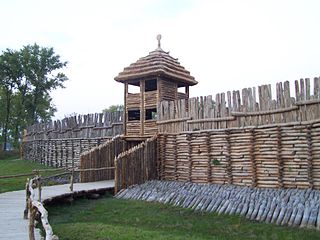 | |
| no seal on Wikidata: | |
| Pałuki region | |
| surface | unknown |
|---|---|
| no value for area on Wikidata: | |
| no tourist info on Wikidata: | |
Pałuki is a historical region in the northern center Poland, mainly in the voivodeship Kuyavian Pomeranian and Greater Poland. It is south of the Krajna and west of Kuyavia. The name derives from the word łuk here, which means bow. The arches refer to the numerous moraine hills in the region and the valleys between them.
Regions

places
- 1 Barcin
 (Bartschin)
(Bartschin) - 2 Gąsawa
 (Gonsawa)
(Gonsawa) - 3 Janikowo
 (At sea)
(At sea) - 4 Janowiec Wielkopolski
 (Janowitz)
(Janowitz) - 5 Kcynia
 (Exin)
(Exin) - 6 Łabiszyn
 (Labishin)
(Labishin) - 7 Mogilno

- 8 Szubin
 (Schubin)
(Schubin) - 9 Żnin(Znin)
- 10 Gołańcz
 (Gollantsch)
(Gollantsch) - 11 Łekno(Lekno)
- 12 Wągrowiec
 (Wongrowiec)
(Wongrowiec)
Other goals
Other goals




.jpg/300px-Golancz(js).jpg)
background
In the fertile area there are large pile-dwelling settlements from the Bronze Age, as in Biskupine. Were in the early Middle Ages Łekno and Gąsawa important centers of power in the emerging Polish state. The area belonged to Greater Poland and later to the Kalish Voivodeship. With the first and second partition of Poland in 1772 and 1793, the region came to Prussia, and between 1807 and 1815 to the Grand Duchy of Warsaw. In 1918 and 1945 she came back to Poland.
language
Polish is the official language in Poland. Due to the high level of education, one can also communicate well with English.
getting there
By plane
- Bydgoszcz Airport lies by Bydgoszcz east of Pałuki.
- Poznan Airport at Poses is located south of Pałuki.
- Gdansk Airport and Szczecin Airport lie east and west of Pałuki.
By train
Railway junction is Żnin.
By bus
The central bus station is in Żnin.
By boat
With appropriate planning, sport boats can also be used to travel to the lake district. The Bydgoszcz Canal connects the Networks with the Brda and Vistula.
In the street
The region is easily accessible on country roads from Poznan, Szczecin or Bydgoszcz.
By bicycle
There are numerous long-distance and near-by bike trails in the region.
mobility
Bus and train connections are available. However, you are most flexible with your own mobile pedestal.
Tourist Attractions
The region is characterized by the numerous Romanesque and brick Gothic churches and numerous lakes and moraines.
activities
The numerous lakes in the region are ideal for water sports. Hiking, horse riding and cycling are also popular.
kitchen
There are a number of good restaurants in the region.
nightlife
The night life is focused on Żnin
security
It's pretty safe.
climate
Compared to the west and south of Poland, the climate is more continental, ie. colder in winter and very warm to hot in summer with little rainfall.
literature
- See article too Poland.






.JPG/350px-Dzielnica_Starego_Miasta,_XIII_Łabiszyn,_(28).JPG)



.jpg/350px-Golancz(js).jpg)


